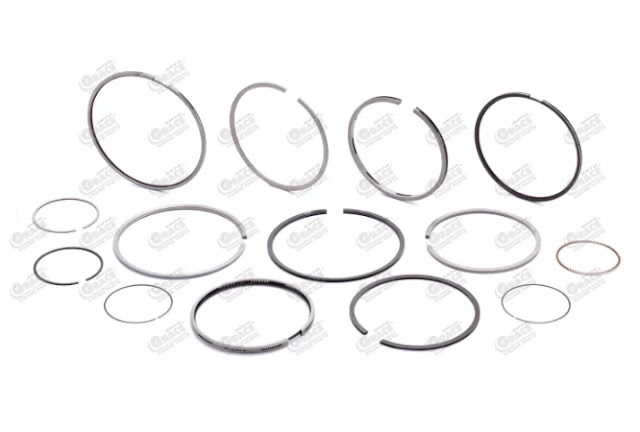What is a Piston Ring?
Piston rings are critical components that connect the cylinder with the piston and enable the engine to run effectively. Piston rings are used for four primary purposes. Read on to learn more about the types of piston rings produced by leading piston ring manufacturers in India, and their functions.
Types of Piston Rings
- Compression Rings or Pressure Rings
Compression rings act as a seal above the piston, preventing gas from escaping from the combustion side. Compression rings are positioned in the piston's topmost grooves.
It, however, may vary depending on the piston ring manufacturer's design. These rings are primarily responsible for sealing the combustion gases and transferring heat from the piston to the piston walls.
- Wiper Ring
The wiper ring, sometimes known as a Napier ring or backup compression ring, is inserted directly under the compression ring. Its principal duty is to remove excess oil from the liner surface and to serve as a backup support ring, preventing any gas leaking farther down that escaped the top compression ring. Most wiper rings have a taper angle face angled downward to provide a wiping motion when the piston approaches the crankshaft.
- Oil Piston Ring
Oil control rings regulate the quantity of lubricating oil that coats the cylinder walls. Additionally, these rings are employed to distribute engine oil throughout the perimeter of the linear uniformly.
The oil is sprayed onto the walls of the cylinder. The volume of engine oil is managed by shearing the layer of oil from the wall of the cylinder liner by the oil ring, providing sufficient lubrication for the upper compression rings. These rings prevent oil from leaking through the gap between the ring's face and the cylinder.
Functions
- Compression Gas Sealing
Between the piston and the cylinder wall, piston rings maintain gas compression. Piston rings seal the cylinder entirely, preventing combustion gas created upon ignition from escaping into the crankcase through the space between the piston and the cylinder. If combustion gases escape, the engine cannot produce enough power, resulting in increased fuel consumption, which is detrimental to the efficiency of the engine and the environment.
- Lubricating Oil Film Control
Piston rings often form a thin lubricating oil layer to avoid scuffing. Due to the frequent igniting of the gas, the piston moves up and down at a pace of several thousand times per minute within the engine.
A constant supply of oil is ensured to the piston to ensure that it operates smoothly and with little metal-on-metal contact. Piston rings regulate the amount of this oil retained between the piston ring and cylinder liner.
- Heat Transfer
Heat is transferred from the piston crown to the cylinder through the piston rings. When the combustion gas ignites, the piston's temperature rises to around 300 degrees Celsius.
If excessive heat builds up within the piston, the engine may suffer catastrophic damage. As a result, it is essential to dissipate the accumulated heat. Piston rings to aid in the dissipation of this heat.
- Support Piston in the Cylinder
Piston rings eliminate piston banging against the cylinder wall. If the piston is angled within the cylinder, it may contact internal components, resulting in engine failure. Piston rings provide support for the piston, allowing for smooth upward and downward motion.
Additionally, piston rings operate under extremely demanding conditions. The load on them fluctuates, and the rings are at their slowest speed and maximum temperature near the top dead centre. The rings must tolerate corrosive combustion products. Piston ring manufacturers in India must ensure the rings have the high tensile strength and excellent resistance to corrosion.

Comments
Post a Comment